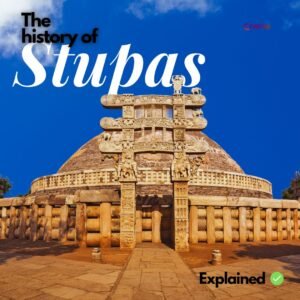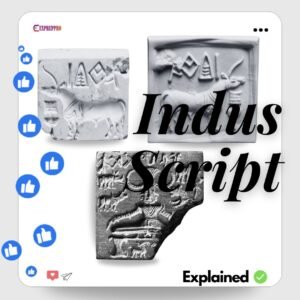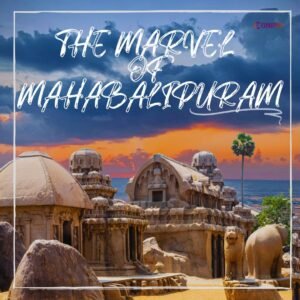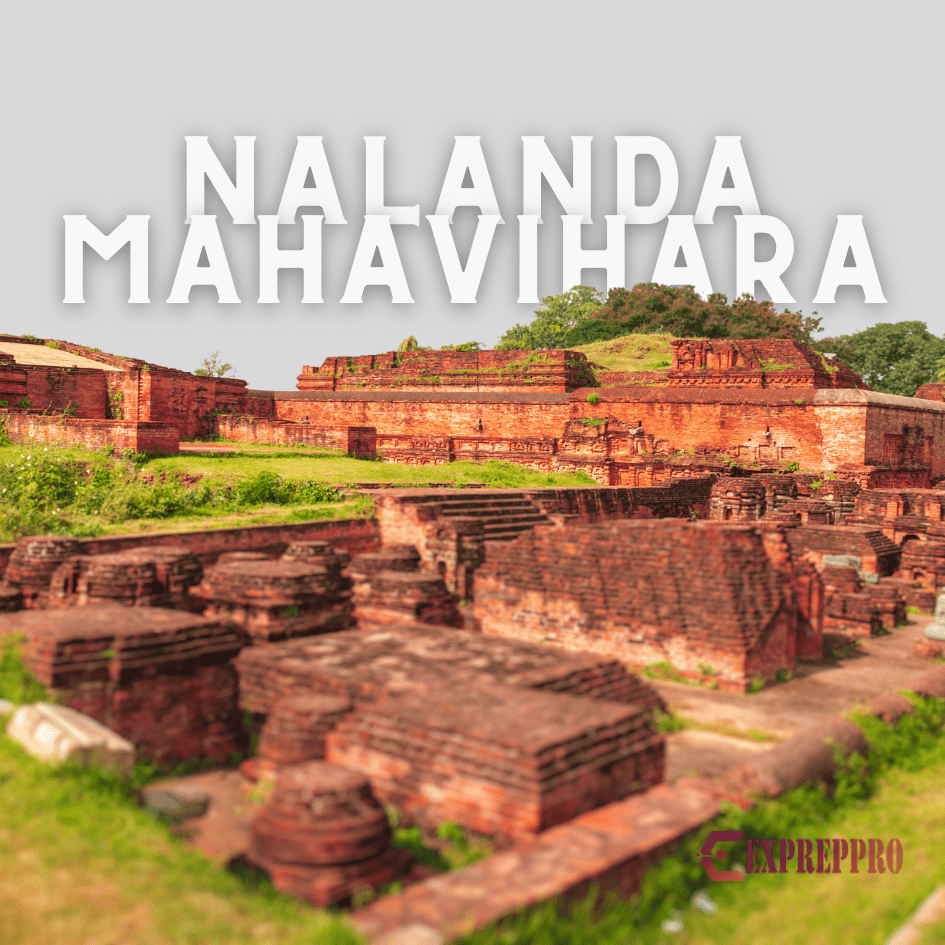
NALANDA MAHAVIHARA, or Nalanda Great Monastery, the world’s oldest university (it existed and flourished much before Bologna, Italy) and an important seat of learning, is located near Rajgir in Bihar. It continued its uninterrupted mission for almost 800 years. Unfortunately, today, this jewel remains in ruins. UNESCO declared this site as the world’s heritage site in 2016.
Origin of Nalanda –
According to Hiun Tsang, the site was initially a mango groove purchased by some merchants and gifted to Buddha. Later, Emperor Ashoka constructed a stupa honouring Sariputra (one of Buddha’s closest disciples). Hiun Tsang spent over five years studying Yogachara doctrine at Nalanda. However, the archaeological findings from Baragon (the site of Nalanda) support the Gupta period and do not support Hiun Tsang’s pre-Gupta history.
The Gupta Kings supported this Mahavihara. The Vikramaditya sent his queen and son Baladitya to study under Vasubandhu, who was present at Nalanda. The Kumaragupta I, Skandagupta, Puragupta, and Narasimhagupta made significant contributions to the development of this Mahavihara. It was founded in the mid-fifth century by Sakraditya, possibly Kumaragupta I.
Patronage after Guptas –
After Guptas, Nalanda enjoyed the royal patronage of Harshavardana of Kannauj and Palas of Bengal. Harshavardhana gifted 100 villages to this university. The second Pala king, Dharmapala, supported Nalanda and became instrumental in creating two monasteries: Somapura or Paharpur(now in Bangladesh) and Vikramashila(Bhihar). According to a copper plate from the Nalanda site, Devapala, the successor of Dharmapala, helped Balaputra, the ruler of Suvarnadipa or Sumatra, to construct a monastery at Nalanda and gave five villages – four in Rajagriha and one in Gaya to support its maintenance.
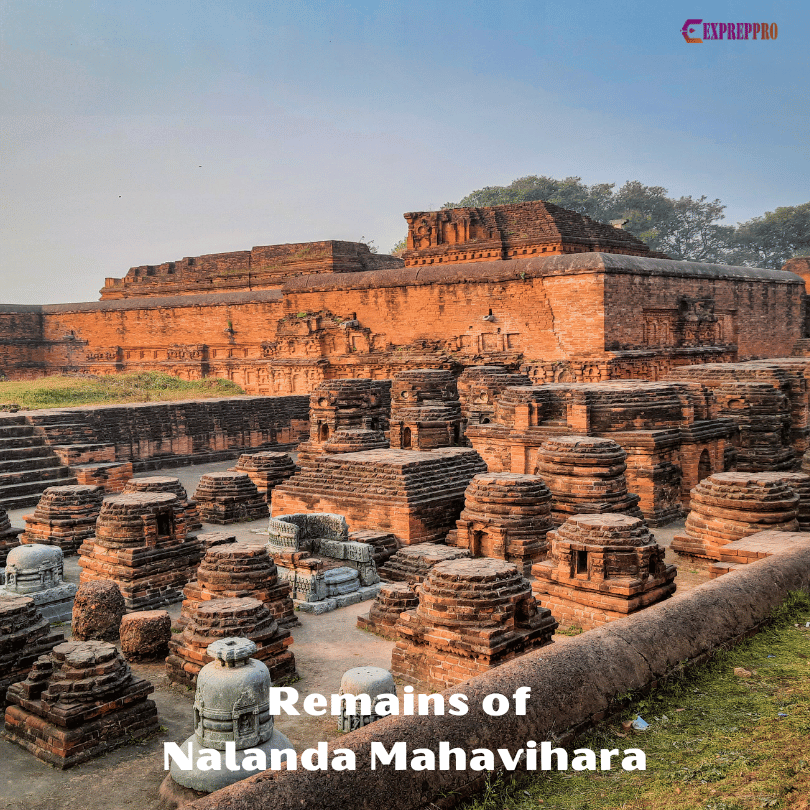
Diversity –
According to HuinTsang, the total number of students at Nalanda was 10,000, but to I-Tsing, it was only 3,000. Nalanda also attracted students from other Asian countries, such as Korea, China, Japan, Tukhara(Bactria), Central Asia, and Southeast Asia. For convenience, foreign students even accepted Indian names(For example, Tao Hi called himself Srideva, and Hiuan Chao used the name Prakasamati).
Masterminds like Silabhadra, Nagarjuna, Aryadeva, Gunamati, Jinamitra, Jnanchandra, Chandrapala, Sigarabuddha, Prabhamitra, Santaraksita, Asanga, Vasubhandhu, and Dinanaga taught at Nalanda as teachers. Silabhadra was the president of the university. The university seal carried the inscription “Sri Nalanda Mahavihariya Aryabhiksu Sanghasya”.
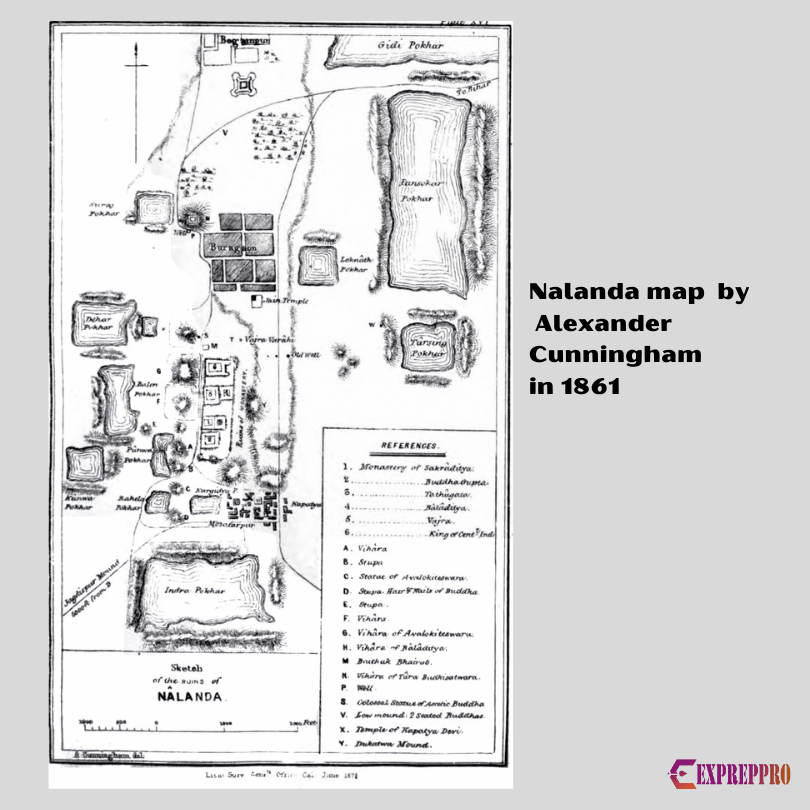
Library –
As per Tibetan records, Nalanda Mahavihara library was known as Dharmaganja and consisted of Ratnasagara, Ratnodhadhi, and Ratnaranjaka. The curriculum of Nalanda went beyond religious sermons to include metaphysics, grammar, arts, logic, medicine, literature and philosophy.
The Decline –
Later, during the campaign of Bakhtiyar Khalji, Nalanda was pillaged and destroyed.

